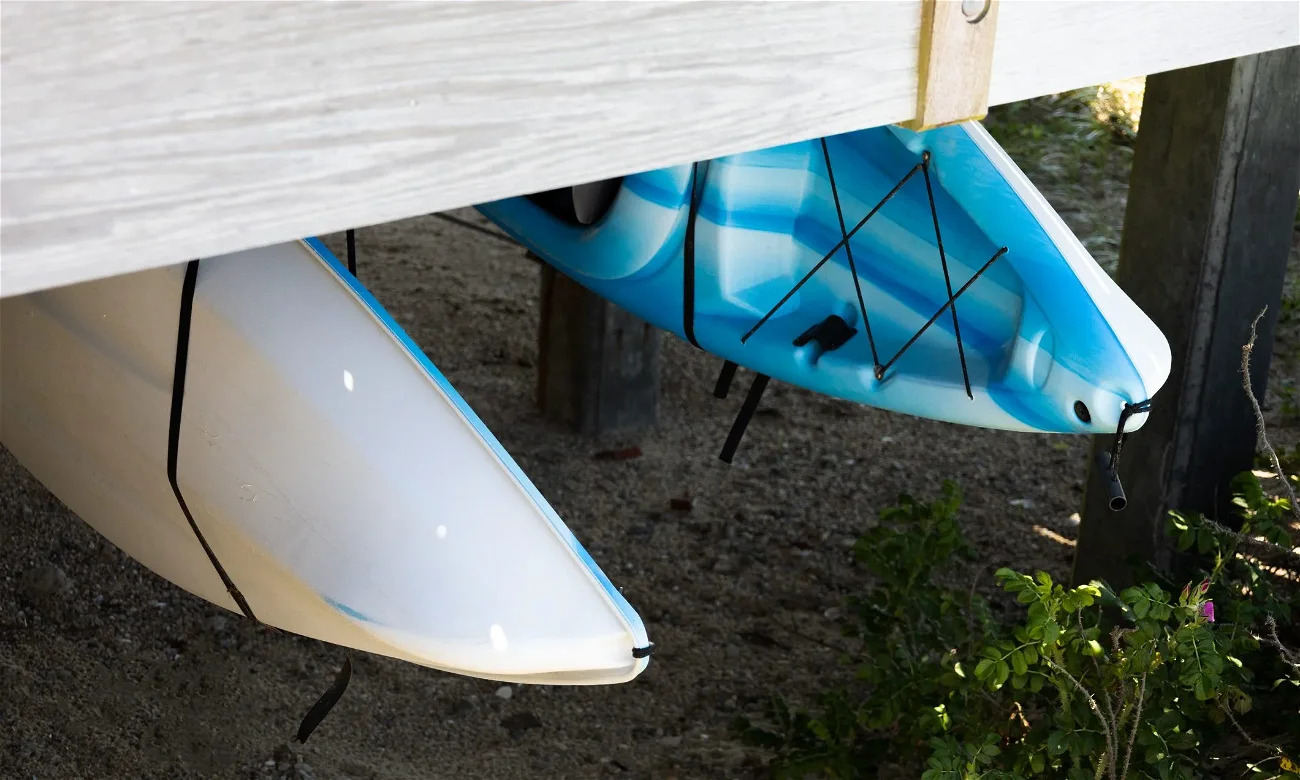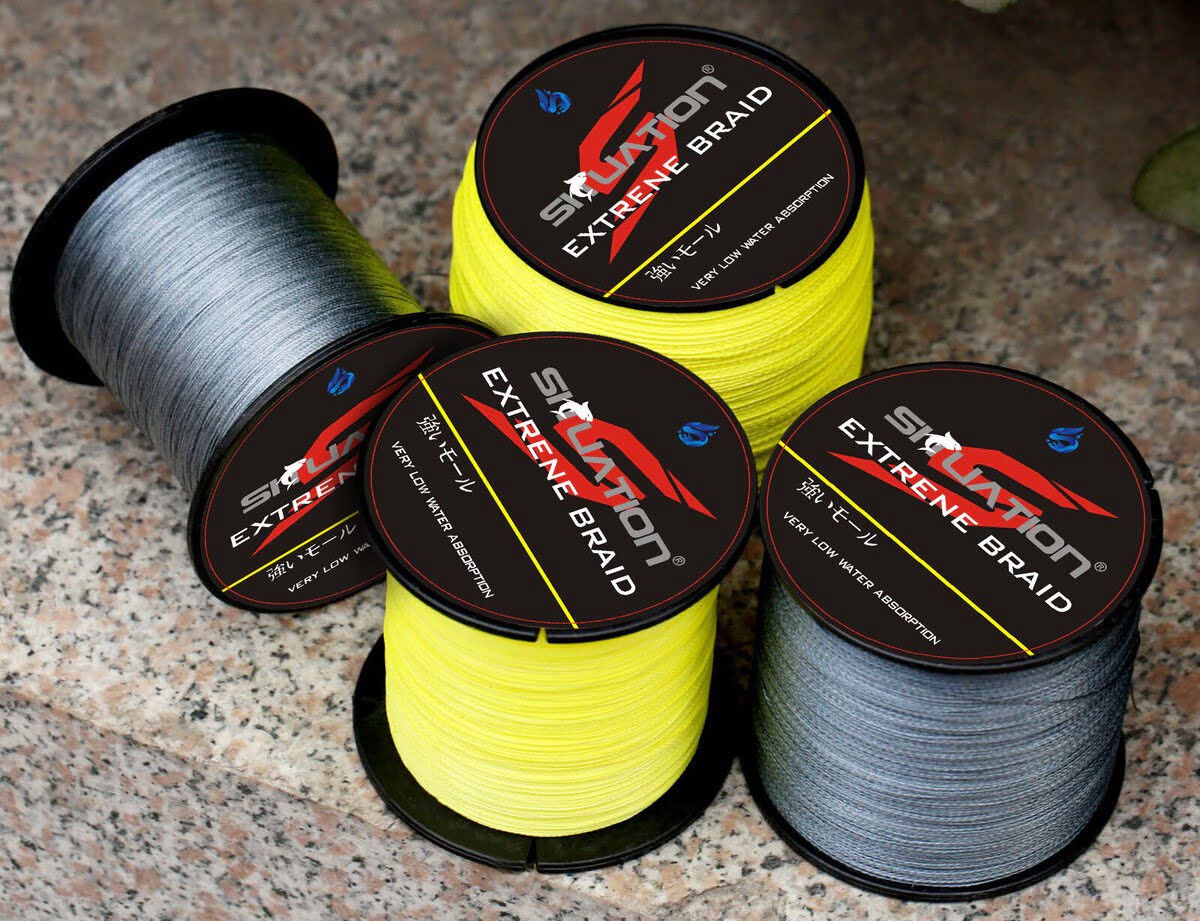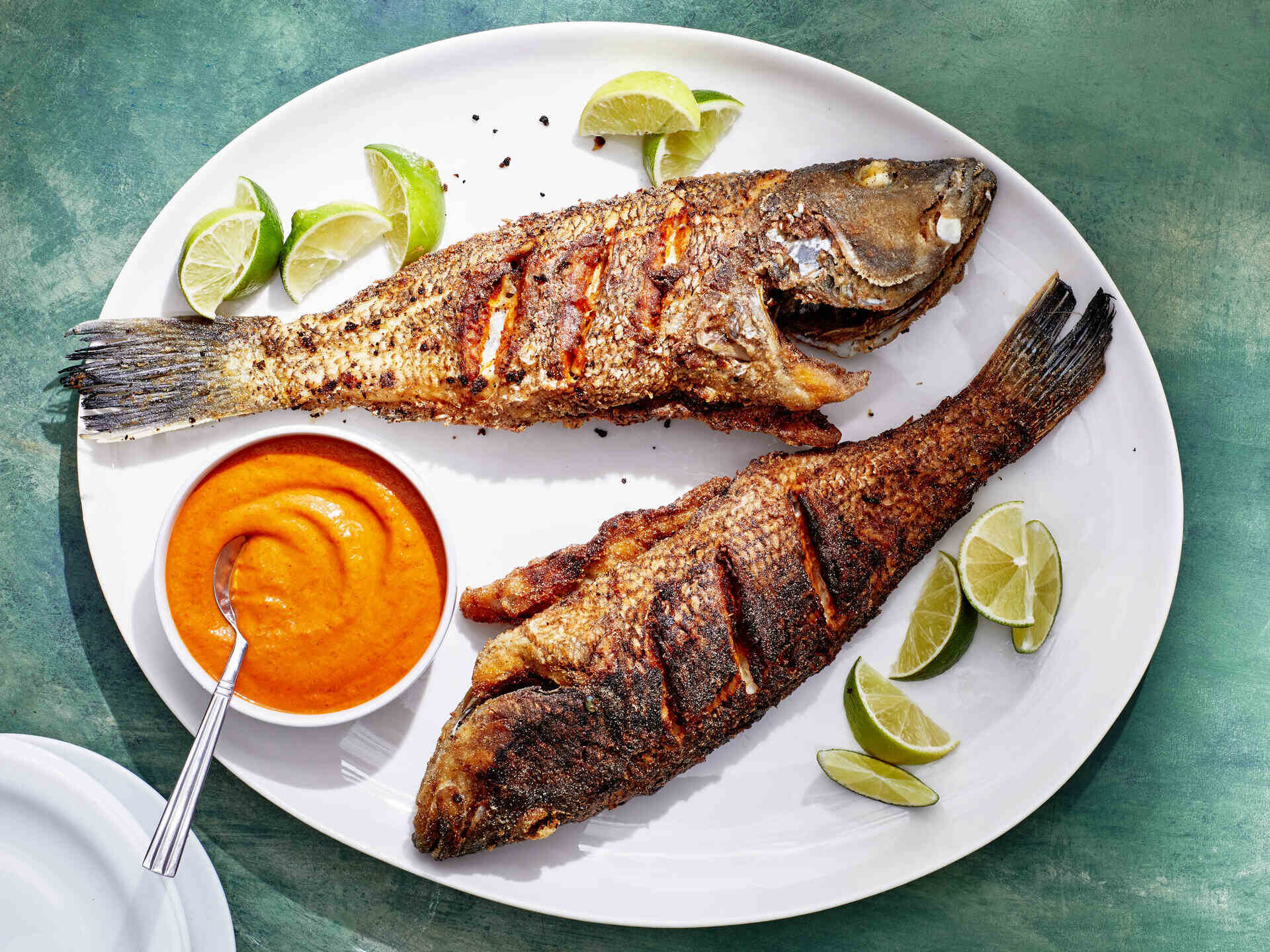

Articles
How To Store Fish On A Kayak
Modified: August 20, 2024
Learn effective ways to store fish while kayaking with our informative articles. Stay organized and keep your catch fresh on your next fishing trip.
(Many of the links in this article redirect to a specific reviewed product. Your purchase of these products through affiliate links helps to generate commission for Storables.com, at no extra cost. Learn more)
Introduction
When it comes to kayaking and fishing, one of the most important considerations is how to store your catch while out on the water. Whether you are an avid angler or just enjoy the occasional fishing trip, having the right storage solutions can make a significant difference in preserving the quality and freshness of your fish.
In this article, we will explore the various options available for storing fish on a kayak. From choosing the right storage containers to securing your catch and maintaining optimal storage conditions, we will provide you with valuable tips and insights to help you store fish while out on the water.
By properly storing your fish, you can ensure that it remains fresh and safe to consume even hours after it’s been caught. So, let’s dive in and discover the best methods for storing fish on a kayak!
Key Takeaways:
- Properly storing fish on a kayak involves choosing the right containers, securing the catch, and maintaining optimal conditions. By following these tips, you can ensure your fish remains fresh and safe to consume, enhancing your kayaking and fishing experience.
- For extended fishing trips, planning meals, investing in quality storage solutions, and practicing catch and release can optimize your storage efforts. Following fishing regulations and responsible waste management are crucial for sustainable fishing practices.
Read more: How To Store A Kayak
Choosing the Right Storage Solutions
When it comes to storing fish on a kayak, it’s essential to choose the right storage solutions that meet your needs and ensure the freshness of your catch. Here are a few key factors to consider:
- Size and Capacity: The size and capacity of your storage containers will depend on the size of your kayak and the amount of fish you plan to catch. Consider containers that are spacious enough to accommodate the fish without overcrowding, as this can lead to spoilage.
- Material: Look for storage containers made from durable and waterproof materials. Some popular options include insulated coolers, plastic tubs, or fish bags that are designed to keep your catch secure and fresh.
- Portability: Since you’ll be carrying these storage solutions on your kayak, it’s important to choose lightweight and easy-to-carry options. Consider containers that come with handles or straps for added convenience.
- Accessibility: Opt for storage solutions that are easy to access while on the water. Choose containers with wide openings or zippered compartments to ensure quick and hassle-free access to your fish.
- Compatibility: Make sure the storage solutions you choose can be securely fastened or fit properly onto your kayak. Look for containers that come with mounting options or can be easily secured using bungee cords or straps.
By considering these factors, you can select storage solutions that are suitable for your kayaking and fishing needs. Remember, the right storage solutions will not only keep your catch fresh but also provide convenience and ease of use while you’re out on the water.
Types of Fish Storage Containers
There are various types of fish storage containers available, each with its own advantages and suitability for kayak fishing. Let’s explore some popular options:
- Insulated Coolers: Insulated coolers are a popular choice for storing fish on a kayak. They come in different sizes and have excellent temperature retention capabilities. Look for coolers with thick insulation and a tight-fitting lid to keep your catch cold and fresh.
- Plastic Tubs: Plastic tubs are another practical option for fish storage. They are lightweight, durable, and often come with lids for secure closure. They can be easily stacked in the kayak and offer ample space to store your catch.
- Fish Bags: Fish bags are designed specifically for storing fish. They are made of durable and waterproof materials and offer insulation to help maintain the freshness of your catch. Fish bags are also lightweight and easy to transport on a kayak.
- Vacuum-Sealed Bags: Vacuum-sealed bags are a great option for longer fishing trips or when you want to freeze your catch. These bags remove air, preventing freezer burn and preserving the flavor and texture of the fish.
- Mesh Bags: Mesh bags can be useful for carrying smaller fish or if you prefer to store your catch in a breathable container. These bags allow water to drain out and can be rinsed easily, helping to keep your fish clean and fresh.
It’s important to choose the type of storage container that best suits your needs, taking into consideration factors such as the size of your catch, the duration of your fishing trip, and the space available on your kayak. By selecting the right fish storage container, you can ensure that your catch remains fresh and of high quality throughout your kayaking adventure.
Securing Fish on a Kayak
Once you’ve caught your fish, it’s important to properly secure it on your kayak to prevent any accidents or spoilage. Here are some tips for securely storing fish on a kayak:
- Use Fish Stringers: Fish stringers are a simple and effective way to secure your catch to your kayak. They consist of a line with clips or hooks that can be attached to the fish’s gills or mouth. Make sure the stringer is securely fastened to the kayak to prevent the fish from escaping.
- Utilize Fish Grippers: Fish grippers are handy tools that allow you to firmly hold the fish without actually touching it. These grippers usually have a jaw-like mechanism that can be clamped around the fish’s lip or mouth, providing a secure grip while you prepare the fish for storage.
- Consider Fish Bags with Straps: If you’re using a fish bag for storage, look for one that comes with straps or handles. This way, you can securely fasten the bag to your kayak, preventing it from moving around or potentially falling off into the water.
- Secure Fish in Coolers: If you’re using an insulated cooler, make sure the lid is tightly closed and latched to prevent any fish from escaping. You can also place additional ice or cold packs around the fish to maintain their freshness during transportation.
- Use Bungee Cords or Straps: To provide extra security, consider using bungee cords or straps to secure your fish storage containers to the kayak. This will prevent them from shifting or falling off while you paddle.
Remember, it’s crucial to secure your fish properly to ensure your safety and the integrity of your catch. By following these tips, you can have peace of mind knowing that your fish is firmly in place and ready for safe storage on your kayak.
Preparing Fish for Storage
Before you store your fish on a kayak, it’s important to properly prepare it to maintain its freshness and quality. Here are a few steps to follow when preparing fish for storage:
- Clean the Fish: Start by cleaning the fish thoroughly. Remove any scales, guts, and organs, and rinse the fish well with cold water. This will help remove any bacteria or contaminants that could affect the quality of the fish during storage.
- Remove Excess Water: After cleaning, pat the fish dry with a clean towel or cloth to remove excess moisture. This will help prevent the growth of bacteria and maintain the texture of the fish.
- Consider Filleting the Fish: Filleting the fish can make storage and preparation easier. Remove the flesh from the bones and separate it into fillets. This will not only make it more convenient to store but also allow for quicker and more even cooking later on.
- Season or Preserve: Depending on your preferences, you can choose to season the fish with salt, herbs, or spices before storing. Alternatively, if you plan to freeze the fish, consider using vacuum-sealed bags or freezer containers to preserve the flavor and texture.
- Label and Date: To ensure proper rotation and identification, label your fish storage containers or bags with the date of catch. This will help you keep track of the freshness of your fish and consume it in a timely manner.
By following these preparation steps, you can optimize the storage conditions for your fish and ensure that it stays fresh and delicious for longer periods on your kayak.
When storing fish on a kayak, use a cooler or insulated fish bag to keep the catch fresh. Pack the fish in ice to maintain its quality and prevent spoilage.
Read more: How To Store A Kayak Vertically
Packing and Organizing Your Catch
When storing fish on a kayak, proper packing and organization can make a significant difference in preserving the quality of your catch. Here are some tips to help you pack and organize your fish effectively:
- Separate by Species: If you catch multiple species of fish, it’s best to keep them separated. This will prevent any cross-contamination of flavors and allow you to easily identify and access specific species when needed.
- Arrange by Size: When using a cooler or storage container, arrange your fish based on their size. Place larger fish at the bottom and smaller ones on top. This will ensure that the weight of the fish is distributed evenly, preventing crushing or squishing of the smaller fish.
- Use Ice Packs or Crushed Ice: Keeping your catch cold is crucial for maintaining its freshness. Use ice packs or crushed ice to keep the temperature inside the storage container low. This will help preserve the quality and flavor of the fish during your kayaking trip.
- Avoid Overpacking: It’s essential to avoid overpacking your fish storage containers. Overpacking can lead to the fish being tightly compressed, causing deformation or squishing. Leave some room for air circulation, ensuring that the fish remains intact and in optimal condition.
- Stack Containers Safely: If you are using multiple storage containers, stack them safely and securely. Make sure each container is sealed and stable to prevent any spillage or shifting while on the kayak. Use bungee cords or straps to secure the containers if necessary.
By packing and organizing your catch properly, you can ensure that your fish remains fresh, intact, and easily accessible during your kayak fishing excursion.
Maintaining Optimal Storage Conditions
To maximize the freshness and quality of your fish while storing it on a kayak, it’s essential to maintain optimal storage conditions. Here are some key factors to consider:
- Temperature Control: Fish is highly perishable and can spoil quickly if not stored at the right temperature. Keep your fish cool by using insulated coolers, ice packs, or crushed ice. Aim to maintain the temperature between 32°F to 39°F (0°C to 4°C) to slow down bacterial growth and preserve the freshness of the fish.
- Minimize Exposure to Sunlight: Direct sunlight can cause fish to spoil faster due to increased heat and light exposure. Store your fish in shaded areas or use opaque storage containers to minimize sunlight exposure and maintain a cooler environment.
- Prevent Water Accumulation: Ensure that there is no water accumulation in your storage containers or bags. Excess water can promote bacterial growth and compromise the freshness of the fish. Regularly drain any water that accumulates and keep the storage area dry.
- Avoid Cross-Contamination: To prevent cross-contamination and maintain the quality of your fish, separate different species and avoid storing fish with strong odors together. This will help preserve the distinct flavors and prevent any undesirable flavor transfer.
- Monitor and Rotate: Regularly check the condition of your fish during your kayaking trip. Remove any fish that show signs of spoilage or have reached their expiration date. By monitoring and rotating your fish, you can ensure that you consume the freshest catch first.
- Quickly Prepare Stored Fish: If you plan to keep your fish for an extended period, it’s best to prepare and cook it as soon as possible. Freshly prepared fish will always taste better than fish stored for an extended period. Consider cleaning, filleting, and cooking your catch at the earliest convenience to ensure optimal flavor and quality.
By paying attention to these storage conditions and taking necessary precautions, you can maintain the optimal freshness and quality of your fish while out on your kayak fishing adventure.
Tips for Extended Fishing Trips
For those planning extended fishing trips on a kayak, it’s important to consider additional factors to ensure the preservation of your catch. Here are some valuable tips:
- Plan Your Meals: If you’re on an extended fishing trip, plan your meals in advance. This will help you determine the amount of fish you need to store and minimize any potential waste.
- Invest in Quality Storage Solutions: Consider investing in high-quality storage solutions such as insulated coolers or fish bags with excellent temperature retention capabilities. These options will help keep your fish fresh for longer periods.
- Bring Extra Ice: It’s always a good idea to bring extra ice, especially for longer trips. The ice will not only help keep your fish cold but can also be used to cool down your beverages and food supplies.
- Utilize Freezing Techniques: If you’re planning on being away from refrigeration for an extended period, consider freezing a portion of your catch. Vacuum-sealed bags or freezer containers are ideal for this purpose.
- Practice Catch and Release: To minimize the amount of fish you need to store, consider practicing catch and release for some species. This will allow you to enjoy the thrill of fishing while reducing the storage and preservation efforts.
- Follow Fishing Regulations: Always adhere to local fishing regulations. Restricted size limits or catch quotas can help prevent overfishing and ensure sustainable fishing practices.
- Clean and Maintain Storage Containers: Regularly clean and sanitize your storage containers to prevent the buildup of odors or bacteria. Thoroughly dry them before using them to store fresh fish.
- Keep an Emergency Kit: Pack a small emergency kit with essentials such as spare bungee cords, straps, and a repair kit for any unforeseen damages to your storage containers or kayak.
- Dispose of Waste Properly: Practice responsible waste management by properly disposing of any fish waste. This includes discarding fish parts in designated areas or disposing of them in a way that will not harm the environment.
By implementing these tips, you can make the most out of your extended fishing trips and ensure the optimal storage and preservation of your catch on your kayak.
Conclusion
Storing fish on a kayak requires careful consideration and planning to ensure the freshness and quality of your catch. By choosing the right storage solutions, securing the fish properly, and following preparation and packing techniques, you can maximize the storage lifespan of your fish while on the water.
Optimal storage conditions, such as controlling the temperature, minimizing sunlight exposure, and preventing water accumulation, are essential for maintaining the freshness of your fish. By monitoring and rotating your catch, you can ensure that you consume the freshest fish first.
For extended fishing trips, planning meals, investing in quality storage solutions, bringing extra ice, and practicing catch and release can help optimize your storage efforts. Additionally, following fishing regulations and practicing responsible waste management are crucial for sustainable fishing practices.
Remember, the goal of storing fish on a kayak is to ensure that it remains fresh and safe to consume. By implementing the tips and techniques outlined in this article, you can enjoy the fruits of your fishing labor on your kayaking adventures without compromising on taste or quality.
So, next time you head out on your kayak for a fishing excursion, be prepared with the right storage solutions and knowledge to store your catch effectively and enjoy delicious fish meals even when you’re out on the water!
Now that you've got the hang of keeping your catch fresh with optimal storage methods on a kayak, why not step up your game with some top-tier gear? If staying dry matters as much as staying organized, you'll want to check out our guide on selecting the best waterproof storage containers, designed to withstand any splash or spill. Proper gear ensures that every fishing adventure, no matter how wet, ends as successful and enjoyable as planned.
Frequently Asked Questions about How To Store Fish On A Kayak
Was this page helpful?
At Storables.com, we guarantee accurate and reliable information. Our content, validated by Expert Board Contributors, is crafted following stringent Editorial Policies. We're committed to providing you with well-researched, expert-backed insights for all your informational needs.















0 thoughts on “How To Store Fish On A Kayak”